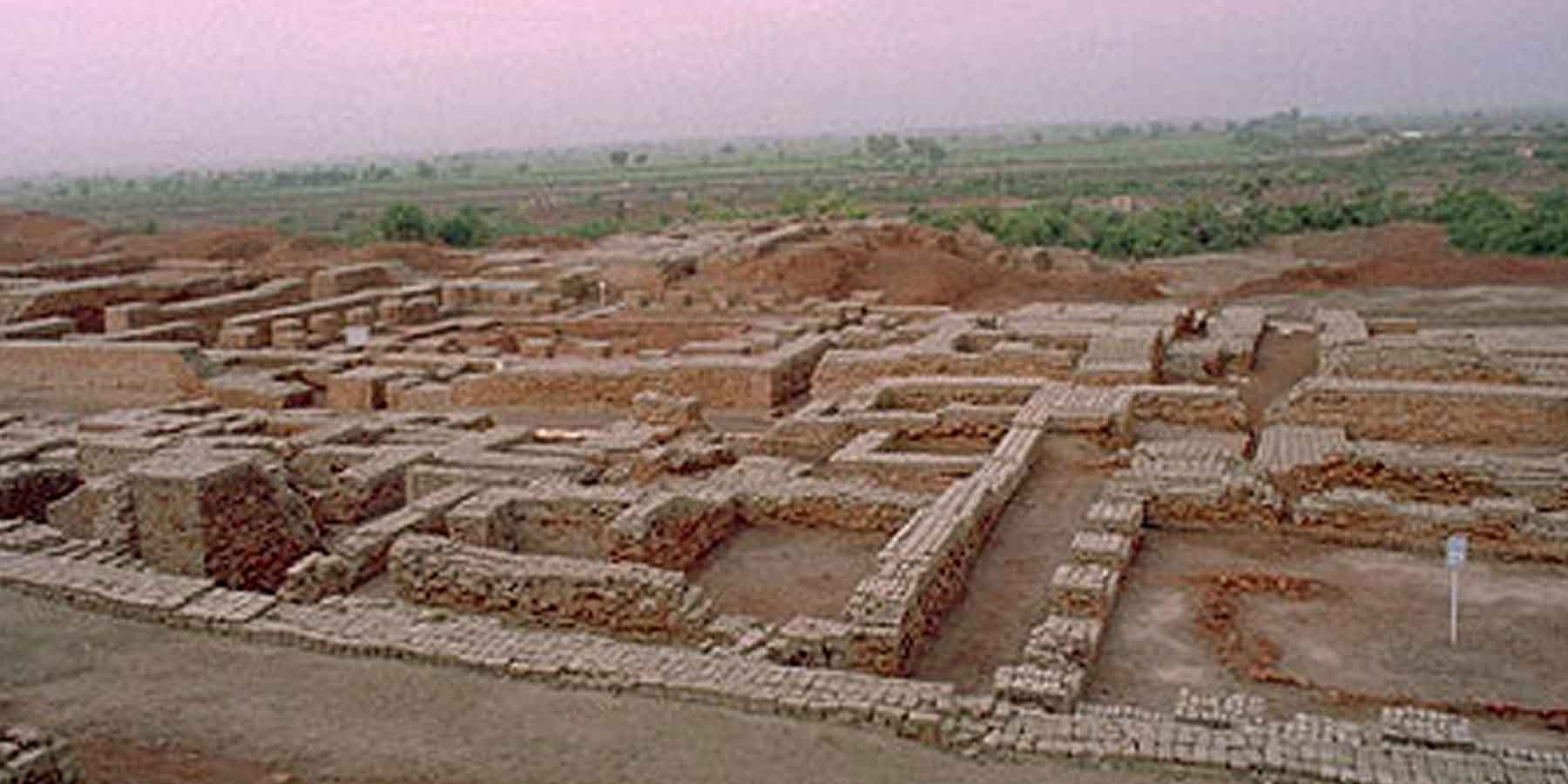In 1921–22, the Archaeological Survey of India revealed the existence of a vast unique civilisation in the north west of India, with its two urban centres at Harappa and Mohenjo-Daro. Later archaeologist dug out many other cities, such as Kalibangan, Kot Diji, Chanhu-daro, Dholavira, Banwali, Sutkagendor, etc. Named after Harappa, the first site to be excavated, the entire civilisation is known as the Harappan civilisation.
Origin and evolution
The Harappan civilisation is dated between 2600 and 1900 BC. There were earlier and later cultures, known as Early Harappan and Later Harappan. The Harappan period characterised by seals, beads, weights, stone blades and baked bricks is called as the Mature Harappan culture. The Carbon-14 datings indicate the mature Harappan period to be from C. 2800/2900–1800 BC.
Geography
The Harappan civilisation was spread over Afghanistan, Sindh, Balochistan, Jammu, Punjab, northern Rajasthan, Kathiawar and Gujarat. The Kalibangan -Mohenjo-Daro represent the centre of the Harappan civilisation. Most of the Harappan settlements were located in this region.

Major centres
The most remarkable feature of Harappan civilisation was its urbanisation. The Harappan places which were small towns, show an advanced sense of town planning. The major centres are Harappa, Mohenjo-Daro, Kalibangan, Lothal, Sutkagen-Dor, Dholavira, etc.
Usually towns were laid out in a parallelogram misc form. Each towns was divided into a higher residential area where the essential institutions of civil and religious life were located and lower residential area where the urban population lived.
System town planning, drainage system, granary, dockyard, public bathing place, use of bricks, buildings, etc. are some of the most impressive achievements of the Harappan civilisation.
Agriculture
The Harappan cultivated wheat and barley, peas and dates, sesame and mustard. In Lothal cultivated rice as early as 1800 BC. The evidence of a furrowed field in Kalibangan indicates that the Harappans used some sort of wooden plough. The irrigation depended on the irregular flooding of the rivers of Punjab and Sind.
Crafts
Various sculptures, seals, pottery, gold jewelry and figurines in terracotta, bronze and steatite, etc, have been excavated from the sites of the Harappan civilisation. Other crafts that have been unearthed include shell works, ceramics, agate, glazed steatite bead making, special kind of combs, etc. The dancing girl and the bearded head from Mohenjo-Daro are the two well known pieces of art.
Science
The Harappans knew metal working and mining and constructing well planned multi storey buildings. They also knew to make long lasting paints and dyes.
Administration
It is not clear as to what sort of political administration the Harappans had. However the sheer range and volume of products utilised by the residents of the larger towns indicate a centralised authority, possibly which could be a class of merchants.
Religion
The various clay figures indicated that the Harappans worshipped the mother Goddess as the symbol of fertility. Certain trees seem to have been considered as sacred. Some people buried their dead in graves. The Harappans probably believed life after death, as their graves often contained household pottery, ornaments and mirrors belonging to the dead persons.
Decline
The Harappan civilisation did not come to a sudden end. Evidence indicates that it underwent a gradual process of de-urbanisation. Possibly, the over utilisation of resources and increase in population contributed the decline of Harappan civilisation.

Comments are closed.